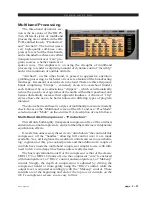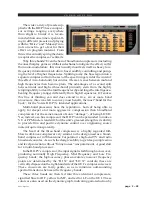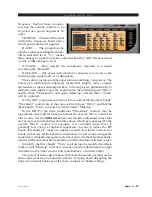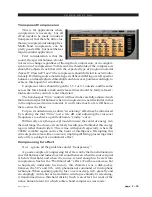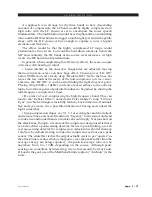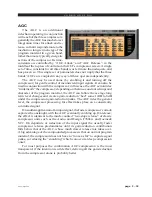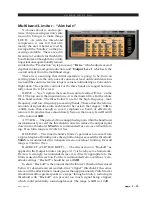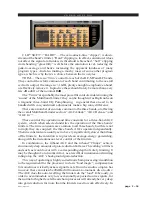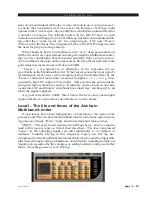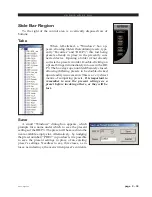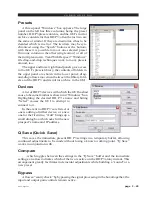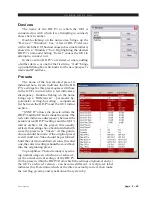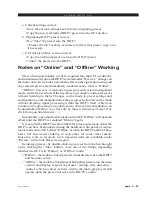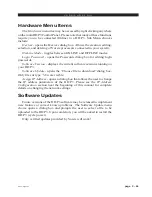
V O R S I S H D P 3 G U I
page 2 – 37
HD P3 / Aug 2006
interested in reducing the dynamic range and preventing overload - that’s
what the “Production” compressor is for. The multiband limiter is used to
ensure that whatever is intended to be heard is heard, and heard in the way
one wants it to be heard. In conjunction with their integral AGCs they
allow the aggressive processing necessary to increase apparent loudness
at the same time as regulate and compensate for a wide variety in source
levels. Under normal circumstances, this can result in jaw-dropping total
gain-reductions. Just remember they are in effect the combined gain-
reductions of a “leveller” or pre-processing AGC plus that of the limiting
stages, which with other solutions would be separate, but total to no less.
Secondly, be aware that the sound whilst in limiting is likely to be
radically different to the unprocessed sound, once it drops out of limiting.
So, unless this is a desired effect (and it can be a valid and interesting one),
ensure the signal stays in limiting if you intend it to be heard!
Setting Up the Output.
Once a satisfactory spectral balance has been achieved using the
individual bands’ trims and possibly post-EQ, it is necessary to match the
multiband limiter’s output with the rest of the world. It is presumed that a
desired output level from the box has been decided, and that the Output
Limiter has been set up to capture at that point. Let’s say it is +8dB. The
Output Limiter should be set to that threshold with zero-overshoot settings
(default, but 0.5mS attack, 50mS release). With normal program material
running through the multiband, and gain-reductions plumbing untold
depths, the “Output Level” control on the Multiband Limiter should be
carefully adjusted such that the Output Limiter is active by just a few dB,
say 3dB, or 5dB at most. The output of the Multiband, although each band
is of a known level, is a mix of the three, and so is instantaneously uncertain
within limits. Running it a few dB into the Output Limiter reduces this
uncertainty without radically altering the carefully crafted sound.
No-free-lunch department: The downside to all these games is that
highly Loud processing although initially mightily impressive can become
tiresome, and eventually aggravating with time. There is an inverse
relationship between aggressiveness and long-term listenability.
Be aware too that heavy compression is not kind to music which has
been low-rate perceptually encoded (e.g. <128k MP3); the encoding
artifacts start to stand out, adding to an already probably grating experi-
ence.





